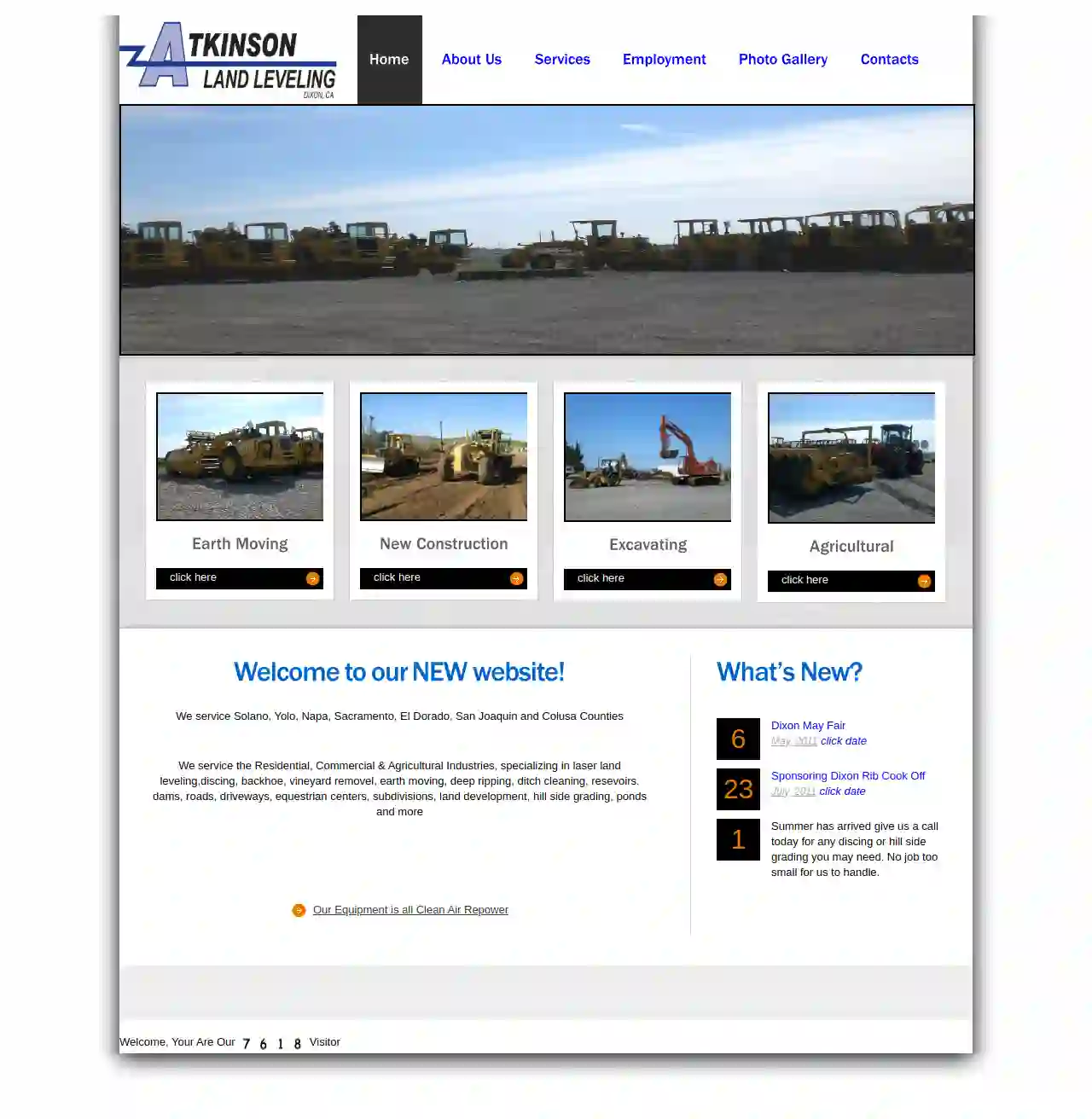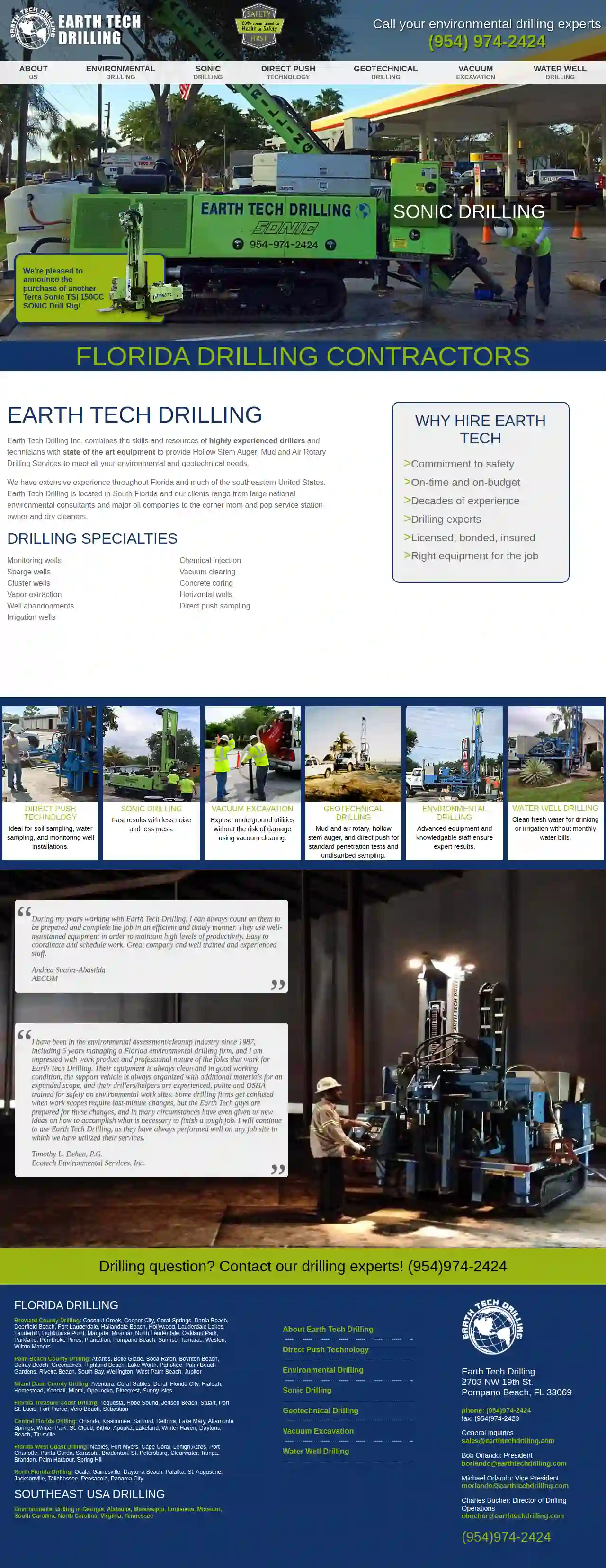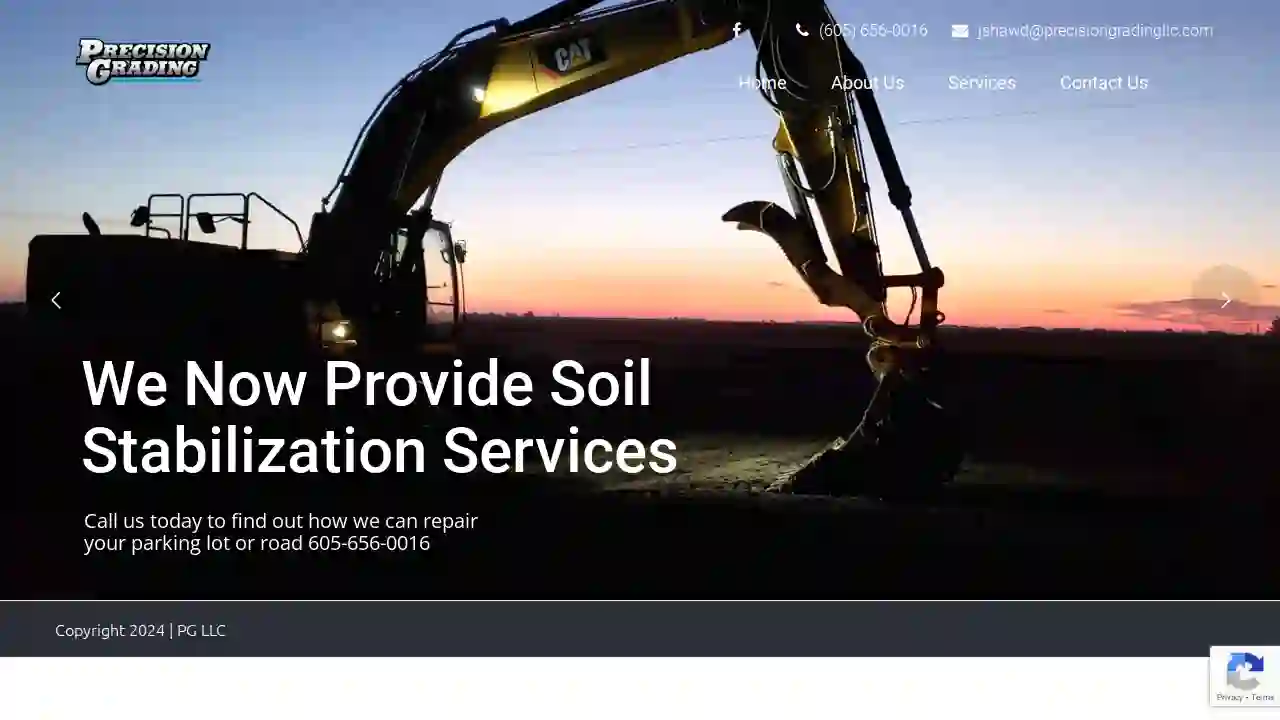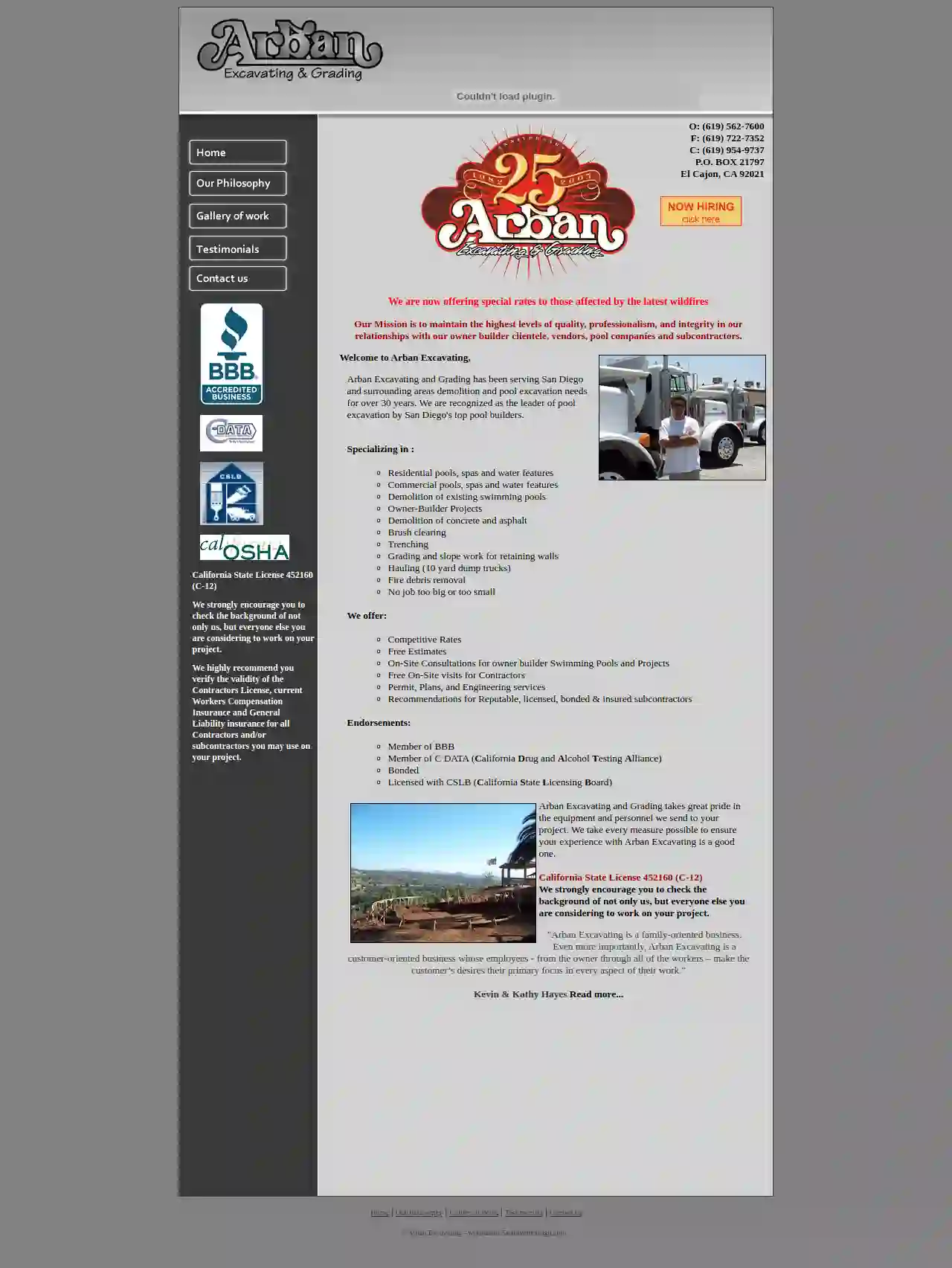Demolition Contractors Lindsay
Best Demolition Experts in Lindsay
Receive up to 3 Demolition Contractors quotes for your project today! Compare profiles, reviews, accreditations, portfolio, etc... and choose the best deal.

Atkinson Land Leveling
51 reviewsDixon, 95620, USAtkinson Land Leveling: Your Trusted Partner for Land Development Atkinson Land Leveling is a family-owned and operated business serving Solano, Yolo, Napa, Sacramento, El Dorado, San Joaquin, and Colusa Counties. We specialize in a wide range of land development services for residential, commercial, and agricultural clients. Our commitment to quality, efficiency, and customer satisfaction has made us a trusted name in the industry. We understand that every project is unique, and we work closely with our clients to ensure their vision is realized. Our team of experienced professionals utilizes state-of-the-art equipment to deliver exceptional results on every job. Whether you need laser land leveling, excavating, discing, vineyard removal, earth moving, ditch cleaning, or any other land development service, we have the expertise and resources to handle it. At Atkinson Land Leveling, we are dedicated to providing our clients with the highest level of service and support. We are committed to safety, environmental responsibility, and exceeding expectations. Contact us today to discuss your project and learn how we can help you achieve your goals.
- Services
- Why Us?
- Gallery
Get Quote
Earth Tech Drilling
4.610 reviews2703 NW 19th St., Pompano Beach, 33069, USEarth Tech Drilling Earth Tech Drilling Inc. combines the skills and resources of highly experienced drillers and technicians with state of the art equipment to provide Hollow Stem Auger, Mud and Air Rotary Drilling Services to meet all your environmental and geotechnical needs. Experience We have extensive experience throughout Florida and much of the southeastern United States. Earth Tech Drilling is located in South Florida and our clients range from large national environmental consultants and major oil companies to the corner mom and pop service station owner and dry cleaners. Why Hire Earth Tech Commitment to safety On-time and on-budget Decades of experience Drilling experts Licensed, bonded, insured Right equipment for the job
- Services
- Why Us?
- Our Team
- Testimonials
- Gallery
Get Quote
Cascade Environmental
51 reviews22722 29th Drive SE, Ste 228, Bothell, 98021, USWho We Are Cascade Environmental is a field services contractor that partners with our clients to provide seamless environmental and geotechnical solutions, from concept to completion. Over the last 25+ years, Cascade has grown from a Northwest US regional drilling company into a national, full service organization offering innovative solutions for every step of your project. Mission To contribute to a sustainable future through environmental investigation and restoration. Vision To be the premier company that leverages safety, employee expertise, technology, and sustainability to continuously outperform our competition in the infrastructure and environmental remediation industry. Core Values We believe in providing a workplace free of recognized hazards for the safety, health and well-being of our employees and clients. We believe in growing our business in a responsible manner through significant investment in our people, our company, and our communities. We believe in exceeding expectations in everything we do. We believe in working together to achieve goals thru integrity, accountability, and trust. CASCADE ENVIRONMENTAL® Cascade Environmental is the leading field services provider of environmental and geotechnical drilling, site investigation, and remediation. We offer the full suite of drilling technologies including sonic, auger, rotary, and direct push. Our crews are experienced in traditional and high resolution site characterization technologies for groundwater sampling and analysis, contaminant mass and distribution, and other in situ data for detailed and accurate conceptual site models. We also offer a line of injectable amendments designed to help you reach site closure faster and cost-effectively. Who We Are Our experts understand the importance of accurate sampling regardless of geologic conditions. Whether a discrete or representative sample is needed, Cascade has the tools and technologies to obtain it. Our experienced crews can obtain samples from soil, rock and even the most difficult subsurface conditions. Cascade offers a full range of environmental drilling and sampling services for nearly any application. We conduct soil, soil gas, and groundwater sampling, including discrete and representative sampling, vertical aquifer profiling, and bedrock coring.
- Services
- Why Us?
- Gallery
Get Quote
Austreim Excavating
55 reviews21625 471st Ave, Brookings, 57006, USExcavating That Goes Above & Beyond Here at Austreim Excavating, we're your go-to company for all your excavating needs and more. When you have a big job that requires leveling your yard or removing a lot of dirt, you need the professionals! And our guys are always ready to take on these challenging tasks. For years, we've been providing clients with quality excavating services in Brookings, SD and beyond! But that's a far cry from all we do. Our range of services includes sewer and water services, demolition services, land clearing, and more. Commercial, Residential, Agricultural, and Municipalities! An Overview Of Services General excavating services Basements & foundations Water/sewer lines Septic systems Septic tank cleaning Demolition Grading Site work Road maintenance/snow removal As an excavating company with nearly 15 years of experience, we like to do things the right way. That's what has earned us our reputation as being one of the best in Eastern South Dakota. Beyond our general excavating services, we dig foundations and basements, repair and install sewer lines and septic systems, provide demolition and grading services and even offer snow removal services to keep your roads clear! You could say we're a jack-of-all-trades but that hardly means we compromise on quality. So if you're in need of a construction site service that goes above and beyond, be sure to make Austreim Excavating your first choice! Our Services What We Do Excavating and construction work; it's what we know and it's what we're good at doing. We have the manpower, equipment and skills to clear any plot of land, prep sites, dig holes and perform the services you need! About Us Who We Are As a family-friendly company, you can expect only the best from Austreim Excavating. We're committed to our customer's satisfaction in everything we do. No job is too big or small; with our team, you're in good hands! Why Us? Austreim Excavating We know how to take even the biggest jobs and complete them in a timely and cost-effective manner. It's our belief that quality says it all, and that's why we make sure everything we do is done right!
- Services
- Why Us?
- Gallery
Get Quote
Precision Grading LLC
4.73 reviewsServing Eastern South Dakota in Mitchell, SD and Western South Dakota in Rapid City, Mitchell, USAbout Precision Grading LLC Precision Grading LLC is a professional grading and excavating contractor located in Eastern South Dakota. We specialize in providing high-quality GPS and Laser site development, grading, and excavation services to meet the needs of our clients. Our team is committed to delivering exceptional results, working closely with you to ensure your project is completed on time and within budget. We take pride in our attention to detail and our commitment to safety. Whether you need excavation for a new construction project, grading for a parking lot, or any other site development services, Precision Grading LLC has the experience and expertise to handle your project with precision and efficiency.
- Services
- Why Us?
- Gallery
Get Quote
Frisch & Sons Pool Demolition, Concrete Removal & Landscape
580 reviewsIrvine, USFrisch & Sons: Your Trusted Partner for Demolition, Excavation, and Landscape Services in Orange County With over 30 years of experience, Frisch & Sons has established itself as a leading provider of demolition, excavation, and landscape services in Orange County and South Los Angeles County. We are fully licensed, bonded, and insured, ensuring your project is completed with the highest standards of safety and professionalism. Our team of skilled professionals is dedicated to delivering exceptional results, exceeding your expectations with every project. We take pride in our commitment to customer satisfaction, providing personalized attention and transparent communication throughout the process. Whether you need a complete pool demolition, grading and excavation for a new construction project, or a beautiful landscape design, Frisch & Sons has the expertise and resources to handle it all. We offer a wide range of services, including: - Concrete Demolition - Pool Demolition - Concrete, Pavers, and Artificial Turf - Grading and Excavation - Landscape and Irrigation - Drain Installation - Hardscape Contact us today for a free estimate and let Frisch & Sons transform your vision into reality.
- Services
- Why Us?
- Gallery
Get Quote
Arban Excavating & Grading
51 reviewsP.O. BOX 21797, El Cajon, 92021, USWelcome to Arban Excavating Arban Excavating and Grading has been serving San Diego and surrounding areas demolition and pool excavation needs for over 30 years. We are recognized as the leader of pool excavation by San Diego's top pool builders. Our Mission is to maintain the highest levels of quality, professionalism, and integrity in our relationships with our owner builder clientele, vendors, pool companies and subcontractors. Arban Excavating is a family-oriented business. Even more importantly, Arban Excavating is a customer-oriented business whose employees - from the owner through all of the workers – make the customer’s desires their primary focus in every aspect of their work. We strongly encourage you to check the background of not only us, but everyone else you are considering to work on your project. We highly recommend you verify the validity of the Contractors License, current Workers Compensation Insurance and General Liability insurance for all Contractors and/or subcontractors you may use on your project.
- Services
- Why Us?
- Testimonials
- Gallery
Get Quote
AAA Backhoe Service
51 reviewsModesto, USExperienced, Trusted Contractor Specializing in Septic Installs, Repairs, Replacement & Pumping, Utility Trenching, and Grading/Excavation For the best septic tank installation and repair, septic tank pumping, utility trenching, and grading/excavation services in Merced County, Stanislaus County, and San Joaquin County, choose A-1 Septic and AAA Backhoe Service. For over 30 years, we've been the preferred septic tank company and excavator for thousands of general contractors, builders, commercial businesses, property managers, city agencies, homeowners, and real estate agents. They trust us because we consistently deliver high quality workmanship and personalized customer service at very competitive prices. Whether you need septic tank repair in Modesto, leach line additions in Ceres, or utility trenching in Salida, we have the skills, knowledge, and expertise to get the job done according to the highest industry standards. Septic System Design, Installation and Repair For Custom Homes, Industrial Facilities, Agricultural Buildings, Restaurants, County Buildings, and Office Buildings Our owner has been designing, installing and repairing septic systems since 1985. He is extremely well-qualified to provide recommendations on the best septic system design and layout for properties of all kinds throughout Stanislaus County, Merced County, and San Joaquin County. With a team of highly skilled staff, well-maintained equipment, and extensive hands-on experience, we are fully equipped to handle all the details of complete septic system installation from start to finish. This includes everything from leach field design and installation, to excavating and grading, utility trenching, and installation of plastic, fiberglass, and concrete septic tanks. One-Stop Shop for Demolition, Foundation Trenching, Grading, and Excavation Services in Modesto, Oakdale, Riverbank, and Surrounding Areas At AAA Backhoe, we are vertically integrated to handle construction jobs of all sizes, from utility trenching for sewer, gas, and telecommunication lines, to swimming pool removal, home demolition, clearing and grading of vacant lots, and trenching for foundations, footings, and retaining walls. Whether you need dirt compaction for a construction site in Salida, joint trenching for a new home site in Escalon, or backfill for a new foundation in Oakdale, we are the best choice for excellent workmanship at a cost-effective price. Modesto's Best Value in Septic Tank Pumping, Cleaning, and Maintenance Services A-1 Septic offers both one-time and regularly-scheduled septic tank pumping, cleaning and maintenance services for Modesto, Escalon, Oakdale, Riverbank, and surrounding areas. During a septic tank cleaning, our experienced septic tank truck drivers will also look for signs of potential septic system failure, such as cracks and leaks in your septic tank or wet spots in your yard. Our affordable, thorough septic pumping services help ensure a long-lasting, well-functioning septic system, particularly when paired with our septic tank bacteria additives.
- Services
- Why Us?
- Testimonials
- Gallery
Get Quote
Florida RCC
52 reviews1205 US Highway 17 92 South, Davenport, 33837, USBetter Than Asphalt, Stronger Than Concrete! A Trusted Service You Can Rely On! Read More Tough, Fast, Economical These qualities have taken RCC from specialized applications to mainstream pavement. Today, RCC is used for any type of industrial or heavy duty pavement. The reason is simple. RCC has the strength and performance of conventional concrete with the economy and simplicity of asphalt. Coupled with long service life and minimal maintenance, RCC’s low initial cost adds up to economy and value. A Different Type of Concrete No Rutting, No Pot Holes Unique Mix, Unique Construction Economy, Performance and Versatility
- Services
- Why Us?
- Gallery
Get Quote
Palafox Prestige Construction, Inc.
517 reviewsTulare, USBuilding your visions. Creating reality. It's what we do. We'll get the job done! What We Do Our commercial & residential projects include both new construction and repairs/restorations. Occupied and fully operational job sites are never a problem. And we can also plan, manage, and build multi-phase jobs. Working Together We offer an end-to-end client experience that includes seamless communication, budgeting, staffing, on-site organization, and solid, quality handiwork every time. Why Choose Us? We work with architects and designers to produce beautiful, functional structures. Call us today and bring our project management skills and extensive construction experience to your next project.
- Services
- Why Us?
- Gallery
Get Quote
Over 22,076+ Excavation Businesses on our directory
Our excavation contractors operate in Lindsay and beyond!
ExcavationHQ has curated and vetted the Best Excavation Contractors near Lindsay. Find a top & reliable business today.
Frequently Asked Questions About Demolition Contractors
- Project Assessment: The demolition contractor evaluates the structure, site conditions, and project requirements.
- Permitting: Obtain necessary demolition permits from local authorities.
- Site Preparation: Secure the site, disconnect utilities, and remove any valuable or reusable items.
- Hazardous Material Abatement: Professionally remove asbestos, lead paint, or other hazardous materials if present.
- Demolition: Execute the chosen demolition method, bringing down the structure safely and efficiently.
- Debris Removal and Site Cleanup: Sort, process, and dispose of demolition debris responsibly. Clean up the site to prepare it for future use.
- Permits and Regulations: Obtain all necessary demolition permits and comply with local building codes and environmental regulations.
- Contracts: Have a clear and comprehensive contract with the demolition contractor outlining the scope of work, payment terms, and liabilities.
- Environmental Laws: Comply with environmental laws regarding hazardous material removal, waste disposal, and pollution control.
- Neighboring Property Rights: Respect neighboring property rights and take measures to prevent damage or disruption to adjacent properties.
- Worker Safety: Adhere to worker safety regulations and provide a safe working environment for demolition crews.
What are the steps involved in a typical demolition process?
What are the legal considerations for demolition projects?
How can I tell if my building contains asbestos?
What is a demolition bond?
What are the steps involved in a typical demolition process?
- Project Assessment: The demolition contractor evaluates the structure, site conditions, and project requirements.
- Permitting: Obtain necessary demolition permits from local authorities.
- Site Preparation: Secure the site, disconnect utilities, and remove any valuable or reusable items.
- Hazardous Material Abatement: Professionally remove asbestos, lead paint, or other hazardous materials if present.
- Demolition: Execute the chosen demolition method, bringing down the structure safely and efficiently.
- Debris Removal and Site Cleanup: Sort, process, and dispose of demolition debris responsibly. Clean up the site to prepare it for future use.
What are the legal considerations for demolition projects?
- Permits and Regulations: Obtain all necessary demolition permits and comply with local building codes and environmental regulations.
- Contracts: Have a clear and comprehensive contract with the demolition contractor outlining the scope of work, payment terms, and liabilities.
- Environmental Laws: Comply with environmental laws regarding hazardous material removal, waste disposal, and pollution control.
- Neighboring Property Rights: Respect neighboring property rights and take measures to prevent damage or disruption to adjacent properties.
- Worker Safety: Adhere to worker safety regulations and provide a safe working environment for demolition crews.